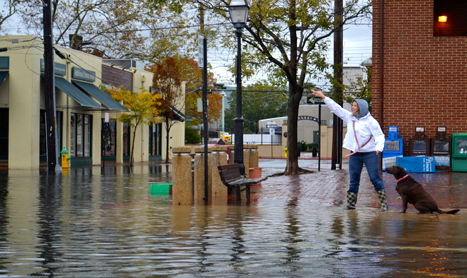
House Bill 615 would establish the council and task it with establishing guidelines for how future state development and renovation projects can avoid damage from rising sea levels and flooding. All new state buildings and renovations would be expected to meet the criteria the council establishes.
The bill follows an executive order Gov. Martin O’Malley signed in December 2012 that required new state development and renovations to consider the risk of coastal flooding and sea level rise and “site and design State structures to avoid or minimize associated impacts,” according to the text of the executive order.
It is very likely that O’Malley will sign the bill, said Nina Smith, a spokeswoman for O’Malley.
The bill is meant to give the executive order “the force of law,” Rich Norling, legislative director for the Maryland Department of Natural Resources said in an email interview. The bill will only affect state development because it is designed after the executive order, he said, which does not include development by local governments or private developers.
Relative sea level rise, which takes both rising sea levels and sinking land into account, averaged 3.9 millimeters per year, according to U.S. Geological Survey data collected from four stations in the southern Chesapeake Bay until 2006. The global average sea level rise is 1.8 millimeters per year, according to a USGS report released in December.
House Bill 615 passed unanimously in the Senate and passed the House of Delegates 95-40. While no organized groups opposed the bill, some delegates opposed it because they are skeptical about the role climate change plays in sea level rise, Norling said.
DNR supports the bill, according to a document prepared by Norling, because it would ensure that the state makes wise decisions about development in areas vulnerable to sea level rise and flooding.
According to DNR, severe weather events in 2011 and 2012 cost the state more than $70 million.
The Maryland Department on the Environment also supports the bill, according to testimony in April by Jeffrey Fretwell, coordinator of MDE’s Office of Smart Growth & Regulatory Reform. According to the testimony to the Senate Education, Health and Environmental Affairs Committee, MDE was a part of a working group designed to address the executive order and the bill is consistent with the recommendations of this working group.
The council would be composed of the secretaries of natural resources, business and management, the environment, general services, planning, transportation, and business and economic development; the chair of DNR’s Critical Area Commission for the Chesapeake and Atlantic Coastal Bays; the director of the Maryland Emergency Management Agency; the chancellor of the University System of Maryland; and five others appointed by the governor to represent local government, business and environmental interests.


You must be logged in to post a comment.